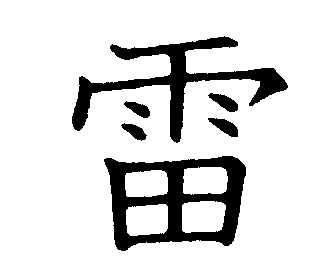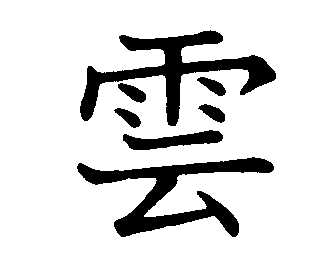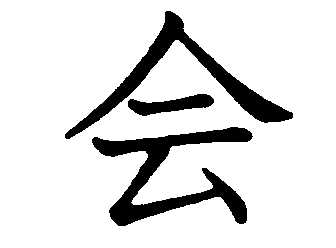




 |
RAI |   |
||
 |
UN | |||
 |
KAI |
| Home | Iaido | Jodo | Calendar | Classes | Seminars | Photos | Glossary | Shodo |
| GLOSSARY | |||
| Parts of the Blade | Sword Movements | ||
|
Ha Mune Hamon Jigane Shinogi Shinogi ji Kissaki Monouchi Hi Sori Nakago |
cutting edge of the sword (convex) back edge of the sword (concave) tempered area/line on blade area between hamon and shinogi line separating jigane and shinogi ji area between shinogi and mune tip of the sword cutting area of the ha groove on side of blade curvature of the blade tang (part of blade inside the handle) |
Waza
Kata Nukitsuke Kiritsuke/nukiuchi Kiriotoshi/Kiri kudashi Makko Yoko giri Kesa giri Kiriage Tsuki Uke nagashi Furi-kaburi Saya biki Hakama sabaki Saya banari Chiburi O-chiburi Yoko chiburi Chinugui Noto |
Techniques
form draw & cut - horizontal committed cut finishing cut vertical cut horizontal cut diagonal cut down diagonal cut up thrust to throat or body receive and deflect recovery from nuki to jodan pulling saya back on cut removing hakama from ankles moment sword tip leaves saya blood wiping, shaking large, circular chiburi side chiburi blood wiping on hakama return sword to scabbard |
| Koshirae | Sword Fittings | Kamae | Stances/Postures |
|
Tsuka Tsuka kashira Tsuba Habaki Seppa Fuchi gane Tsuka ito Same Menuki Mekugi Mekugi ana Saya Koiguchi Kojiri Kurigata Sageo |
handle end of handle, fitting at end guard fitting on blade next to tsuba washers on each side of the tsuba fitting on tsuka next to tsuba laced wrapping on handle sharkskin wrapping on handle "charms" on handle peg holding handle to tang peg hole Scabbard mouth of scabbard end of scabbard knob on scabbard cord on scabbard |
Shizentai Chudan Gedan Jodan Hasso Waki Hanmi Sei tai Iai Goshi |
natural standing position mid level lower level upper level kissaki back, pointed up kissaki to back & down sideways posture facing forward, hips square stable position, hips lowered |
| Types of Swords | Iai Gi | Iaido Clothing | |
|
Katana Wakizashi Daisho Gunto Shinto Koto Tachi Iaito Shinken Bokken/bokuto |
long sword, mounted edge up short sword long and short sword worn together sword made just prior to and during WW11 new sword - made 1600 to 1870 old sword – made pre 1600 old style sword, mounted edge down training sword (aluminum blade, not sharp) real sword (steel blade, usually sharp) wooden sword |
Keiko gi Uwagi Juban Hakama Himo Koshi ate Obi Tenugui Zori Tabi Kimono Kamon Montski |
training uniform practice jacket/top under gi pants/skirt straps used to tie hakama back panel on hakama belt hand wiping cloth Japanese sandals Japanese "socks" Top with wide sleeves Family crest Kimono with kamon |
| Ashisabaki | Footwork | Holding the Sword | |
|
Mae Ato Okuri ashi Tsugi ashi Ayumi ashi Hiraki ashi |
forward step
step back forward foot leads, back foot catches half step, rear foot to front, front moves forward cross step side step |
Te no uchi Kiri te Shinite/nobite Tomete Katate giri Morote giri Soete Hasuji |
Grip on sword handle cutting hand dead hand - weak grip – no cut block, stop grip one handed cut two handed cut one hand on tsuka, one on blade blade angle |
| Other Terms |
Etiquette | ||
|
Mokuso Seiza Tate hiza Kiza Rei Hajime Yame Naore Ushiro Taijo |
meditation sit on both knees sit on one knee sit on toes bow start, begin stop return to shizentai turn to the rear return after finishing shiai/match |
Saho
Reiho Keito shisei Torei Shomen ni rei Otagai ni rei Za rei Ritsu rei Taito Datto Arigato gozaimasu |
Etiquette
Bowing etiquette holding sword at left side bow to sword bow to front bow to each other sitting bow standing bow putting sword in belt taking sword from belt thank you |
| Types of Practice | Dojo | Training hall | |
|
Keiko Kihon Mi tori keiko Taikai Shiai Tameshigiri Embu Tan ren |
learn old style (practice, training) basics watching practice competition competitive matches test cutting on targets demonstration hard training |
Shomen Kamiza, shinzen Ryu Koryu Ko hai Sempai Yudansha Sensei |
front of dojo shrine, alter in dojo school, lineage old school junior student senior student student with dan rank instructor/teacher |
| The Swordsperson | Concepts | ||
|
Teki Ashi Migi Hidari Hara Suigetsu Te Tanden |
opponent foot right left abdomen solar plexus hand centre of balance – below navel |
Ki Kime Seme Kokyu Ma ai Ma Metsuke Enzan no metsuke |
spirit, energy focus at finish pushing feeling, pressure breathing spatial distance temporal distance gaze, look gaze at the far mountain |
| Jodo Terms | |
| JO | A wooden staff (L=128cm, Diam=2.4cm |
| Joseki | The tip of theJo |
| Rei | Bow |
| Sage Jo (lowered Jo) | LStanding position with tip lowered to point at the floor, with the other end touching the back of the right shoulder |
| Kamae | Postures or "ready stances" |
| Tsune no Kamae | holding the centre of the jo in the right hand, at the right side of the body, forward tip at navel height, slight angle in. |
| Honte no Kamae | normal hand grip, body position is ya ya hanmi |
| Gyakute no Kamae | reverse hand grip, body position is ya ya hanmi |
| Hiki otoshi no Kamae | side position kamae, jo follows the line of the back leg, body position is ma hanmi |
| Kamae o toku | release posture on the sword side, similar to gaedan, the tip points outside of the opponents left knee |
| ya ya hanmi | partial sideways position, the chest points to a diagonal about 30 degrees from the opponent |
| ma hanmi | full sideways position, the chest points 90 degrees from the opponent. |
| tachi | sword |
| uchidachi | sword side |
| shidachi | jo side |
| Kihon | basics |
| Kihon Tandoku | solo basics practice |
| Kihon Sotai | Partnered (paired) basics practice |
| Sogo ni rei | bow to each other |